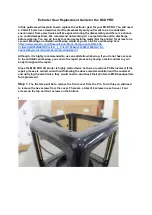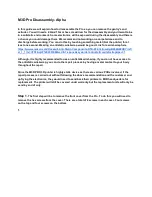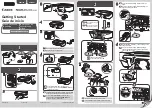
FORMS DESCRIPTION LANGUAGE
LOGO
Keyword LOGO
EAGLE
The name of the logo, a one- to six-character alphanumeric
label, is given to the logo when it is digitized by the Xerox
Font Center or Rank Xerox.
AT 10,12
The keyword AT and the coordinates (y,x) indicating where
the logo is to be placed.
Considerations
Be sure that font memory capacity is not exceeded. Logos larger
than two square inches may be used if they are the result of
using smaller components of the logo to gain the desired effect.
Sample .FSL
The LOGO command is typically inserted near the end of the
.FSL, as illustrated in figure 2-5.
Figure 2-5.
Placing a logo
HORIZONTAL TEXT USING FONT 2 IN CENTER CENTER
BOX 6,1 ’DATE’;
COMMENT *** PLACE LOGO ***;
LOGO EAGLE AT 1,26;
END;
GRAPHIC
You can use the GRAPHIC command to place your images at any
location on the page. A form may consist solely of graphics
(images). Each graphic to be associated with a form must be
specified in the .FSL file.
Syntax
GRAPHIC
name
AT
vpos
unit
hpos
unit
SCALE
IS
n/d;
Parameter options
name
Name of a graphic (.IMG) file, found on the system disk.
vpos
Specifies the vertical position of the top edge of the graphic
relative to the virtual page origin. This parameter is a decimal
number with up to two decimal places (except for DOTS,
which must be an integer). If no unit is specified, grid unit
dimensions are used as the default.
unit
Unit of linear measurement, expressed as inches (IN),
centimeters (CM), or DOTS. If units are not specified, grid
unit dimensions are used.
hpos
Specifies the horizontal position of the left edge of the
graphic, relative to the virtual page origin. The format of the
specification is the same as for vpos.
2-18
XEROX 4050/4090/4450/4650 LPS FORMS CREATION GUIDE
















































